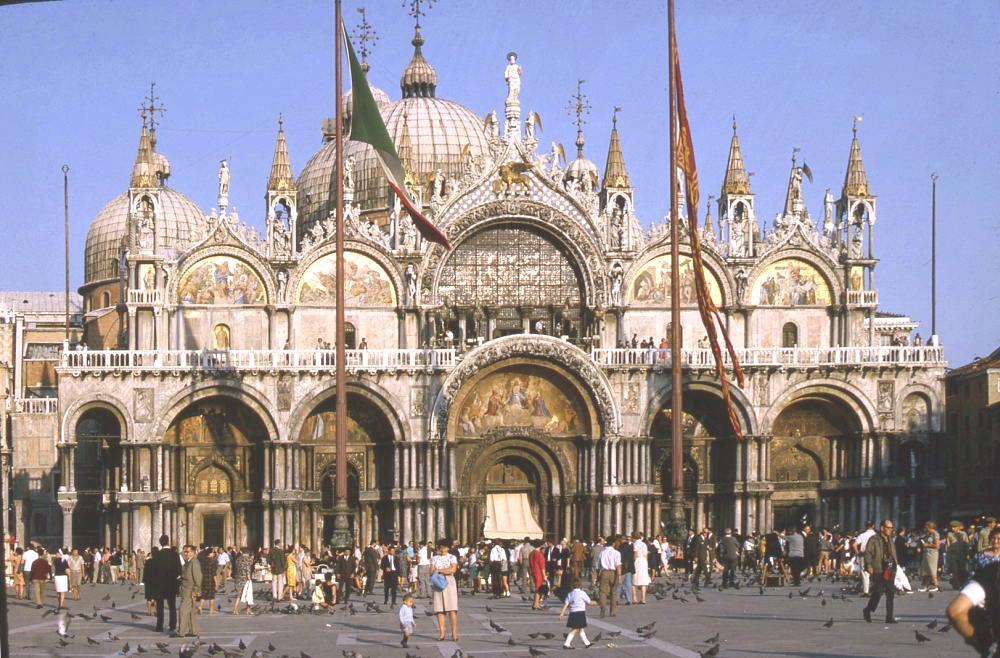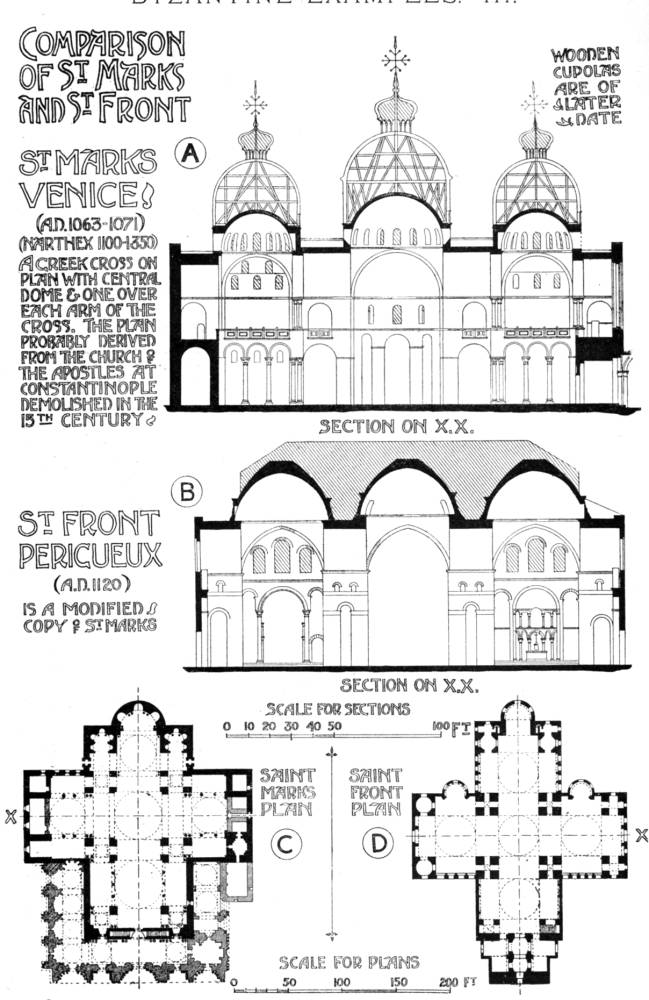The term Romanesque may be said to include all those phases of Western European architecture which are more or less based on Roman art, and which were being carrried out, in a rough and ready way, in various parts of Europe, from the departure of the Romans up to the introduction of the pointed arch in the thirteenth century. The general architectural character is sober and dignified, while picturesqueness is obtained by the grouping of the towers, and projection of the transepts and choir.
As helping towards the appreciation of the character of Romanesque architecture, imagine an ancient civilization of vast extent, devoid of physical force, and recognisable only by the multitude of its monuments, some intact, others injured or partially destroyed, all unguarded, and most of them disused — a calamity which happens in due course to every great nation or group of people: and further suppose that the civilization is presented by a man, dormant, but who slowly, and with many a contortion, and many a yawn, threw off the sleep of age and awakened to a sense of the treasure he possessed, of the wants he began to understand, of the means to the ends he would attain. In his midst were ruins of vast edifices, some still standing among heaps of stones hewn and carved of sculptured capitals and friezes, of monoliths of porphyry and marble, while his own shelter afforded him little protection either from heat or cold. What happened? As time went on he gathered up the smaller fragments and arranged them perhaps upon the foundations, still intact, of an ancient building, and as he gradually acquired a knowledge of the uses to which he might apply this and that fragment, he insensibly produced anew art founded on the old. This explains the birth of Romanesque, for on the collapse of the Western Roman Empire, the quarry of the ruins of ancient buildings largely influenced the work done, both in construction and decorative treatment, for the earlier buildings of the period were often built from the remains of ancient Roman buildings in the vicinity. In the course of time, however, a new style was evolved, for, putting aside spasmodic efforts, the period of the tenth to the twelfth centuries is remarkable for the tentative employment of a new constructive principle and a new use of material. The first was the principle of equilibrium which succeeded that of inert stability as used by the Romans, and the second was the employment of dressed stonework in comparatively small pieces, connected with mortar beds of considerable thickness. This was a method not before attempted, because the materials in use up to that time had not demanded it. By this new employment of materials, the whole current of architecture was turned to a constructive system which should answer to its needs, and which, after many tentative experiments, was to lead to the next glorious period of architecture—the thirteenth century—in which elasticity of structure was joined to the principle of equilibrium.
In Italy (page 228) there were various early Christian edifices erected at Ravena from the fifth to the seventh centuries, for Ravenna was the principal city in Italy during this period, being the seat of Exarch or representative of the Byzantine Emperor in the western part of his dominions. These buildings partake, naturally, of the elements of the fully developed Byzantine style, in the same way in which S. Mark's, Venice., and S. Front, Perigueux, was the result of the close connection ol liiese centres with the trade and commerce of the East (No. 84).


St. Mark's Cathedral, Venice — a modern photograph and Banister Fletcher's diagram. [Click on these images to enlarge them.]
In France especially in the Western and Northern Provinces, the old traditional basilican plan was preferred and adhered to during the eleventh and twelfth centuries with certain exceptions, notably S. Front, but the dome raised on pendentives became the common kind of vaulting, in the South, in conjunction with the aisleless nave. It is worthy of note also that the use of the pointed arch occurred in the South of France sooner than in the North, and it is considered by some, butt with apparently little foundation, to have been derived from contact with the Saracens, who invaded this portion of France from 719-732. Further, the development of monasteries in the eleventh century gave a great impulse to civilization and agriculture, and exercised considerable influence on architecture. Provence was, moreover, in the twelfth and thirteenth centuries the chief centre of the growing traffic from the East, and the highway bv which artistic and other products of the Levant were dispersed through France and the North of Europe. Similarly, the development from Roman to Gothic art was accomplished through the ordeal of the destructive, yet purifying dissolution of the Dark Ages, whence the true spirit of Roman construction emerged, cleared to a great extent of the extraneous elements with which it had been so long encrusted. Up to the end of the twelfth century the Provencal architects had led the way, but at this period the lay architects of the North, seizing on the Provencal principle of the Pointed arch, soon developed from it the magnificent Gothic system of the perfected architecture of the thirteenth century.
References
Fletcher, Banister, and Banister F. Fletcher. A History of Architecture on the Comparative Method for the Student, Craftsman, and Amateur. 5th ed. London: B. T. Batsford, 1905.
Last modified 9 March 2014